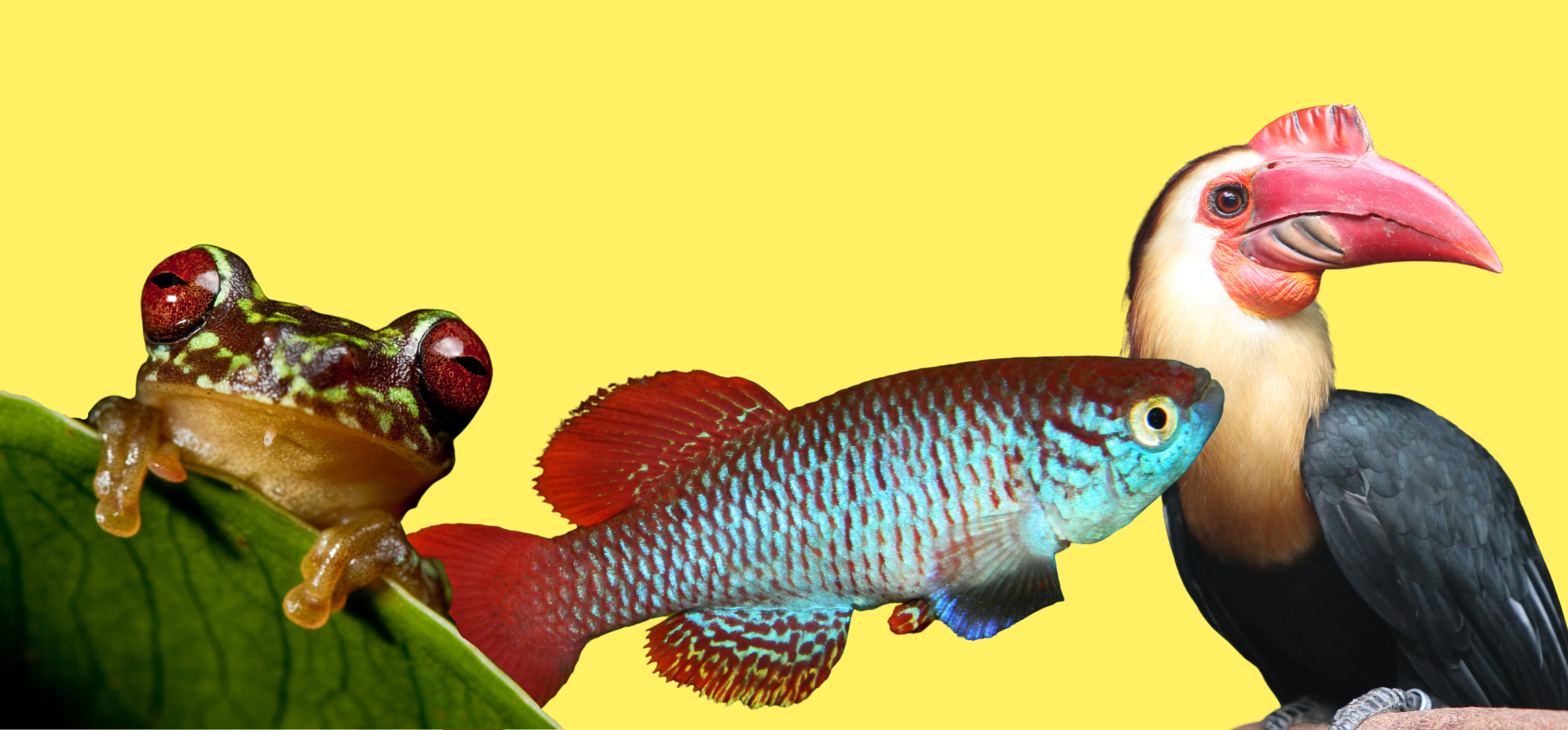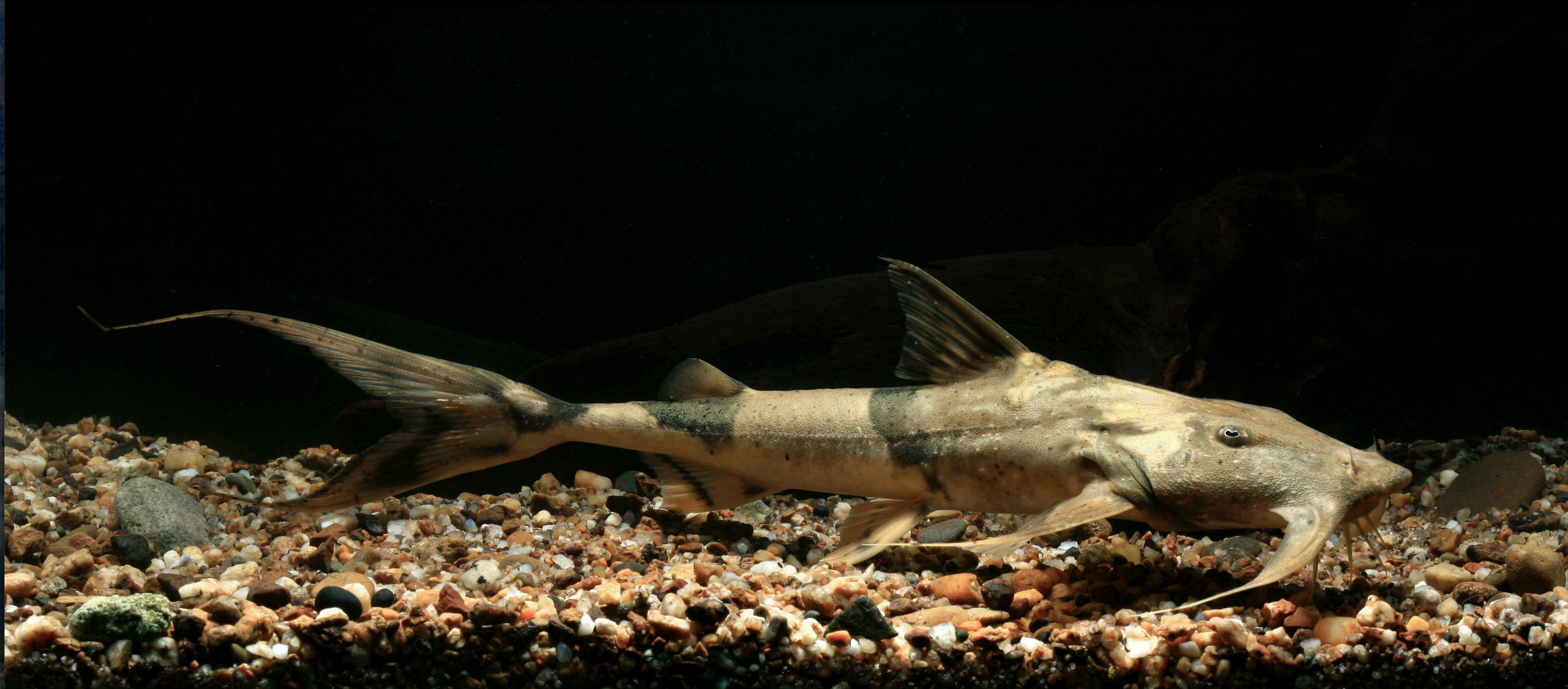Five of the most incredible migratory fish
By Michael Edmondstone
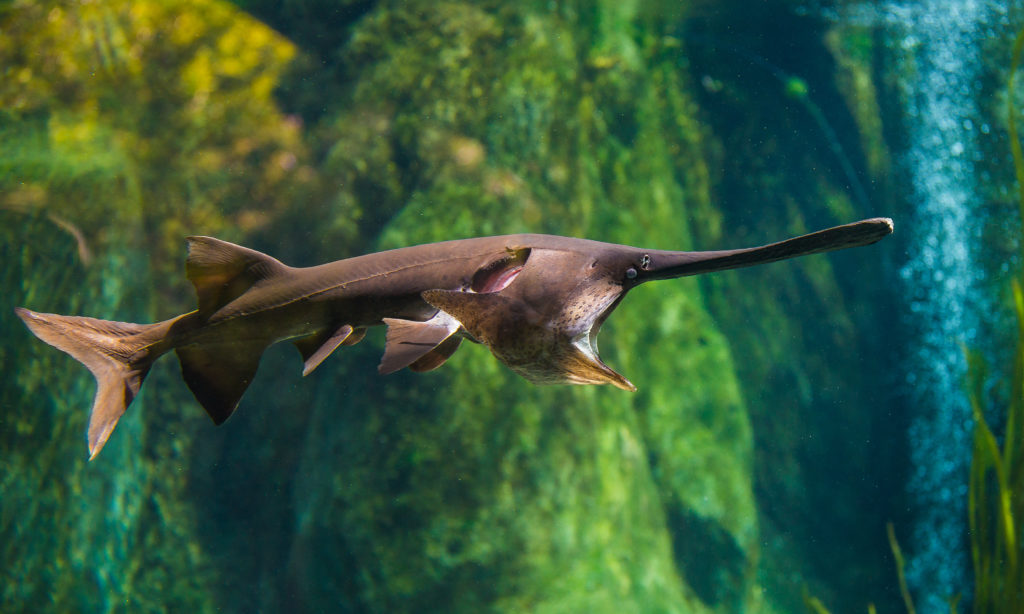
Image © Shutterstock
Migratory fish are amazing. Many species swim thousands of miles on epic journeys across oceans and up rivers to spawning grounds. They provide critical protein sources for over one billion people, and they are essential links in the wider food web, helping ensure healthy ecosystems for countless other critters.
World Fish Migration Day is an annual event that celebrates these incredible animals and highlights the importance of free-flowing rivers. Most of the world’s rivers are fragmented by dams, weirs or sluices, leading to hundreds of fish species being unable to complete their natural migrations. The loss of natural swimways has played a devastating role in the decrease of freshwater fish populations, which have declined by 84% since 1970.
To mark the occasion, we wanted to showcase five of the most remarkable migratory fish. Here goes!
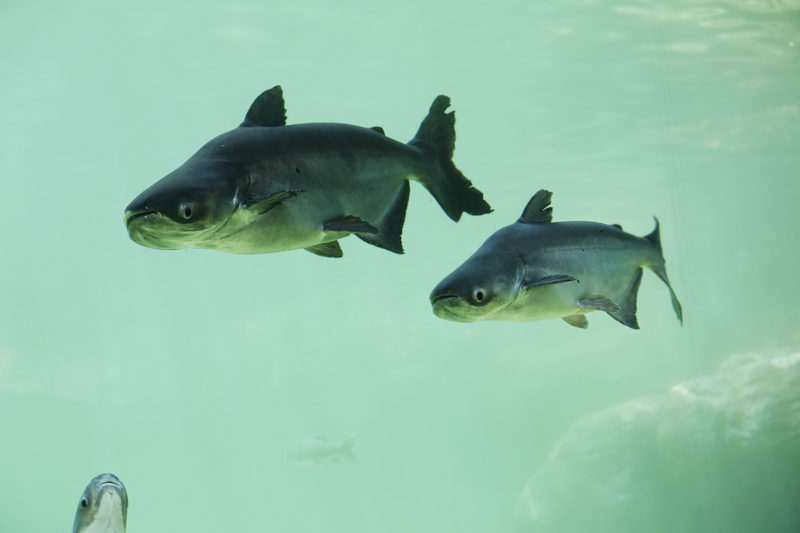
Image © Wildlife Reserves Singapore, David Tan
Mekong giant catfish
The Mekong giant catfish is massive. Individuals can weigh up to 350kg and reach lengths of up to 3m. Despite their monstrous size, they are gentle giants, opting to feed on algae and tiny invertebrates living on the river bottom. They were once abundant, and cultural practices dictated when and where they could be captured. Like many migratory species though, they are now incredibly rare and have been assessed as Critically Endangered. They are so rare, in fact, that researchers seldom see them in the wild. Harmony, our Conservation Programme Manager, was lucky enough to get up close and personal with them in a reservoir in Thailand, and they were calm and curious enough to swim right up to her and butt her legs while she stood waist-deep in the water. So cute.
Beluga sturgeon
If you thought the Mekong giant catfish was large, how about this: the beluga sturgeon can weigh more than 1,200kg and grow up to 8m in length. That’s almost as long as an old London Routemaster double-decker bus! Sturgeon are the world’s oldest group of fishes, stretching back 200 million years, 50 million years before the first birds came into existence. These living fossils have strong bony plates known as ‘scutes’, instead of scales and, like sharks, have skeletons made of cartilage rather than bone. Although they face no natural threats, overfishing for their meat and caviar, along with habitat loss due to damming and river fragmentation, have caused the species to be listed as Critically Endangered. According to the IUCN Red List of Threatened Species, about 90% of their natural spawning habitat has disappeared. Their survival now depends on hatcheries.
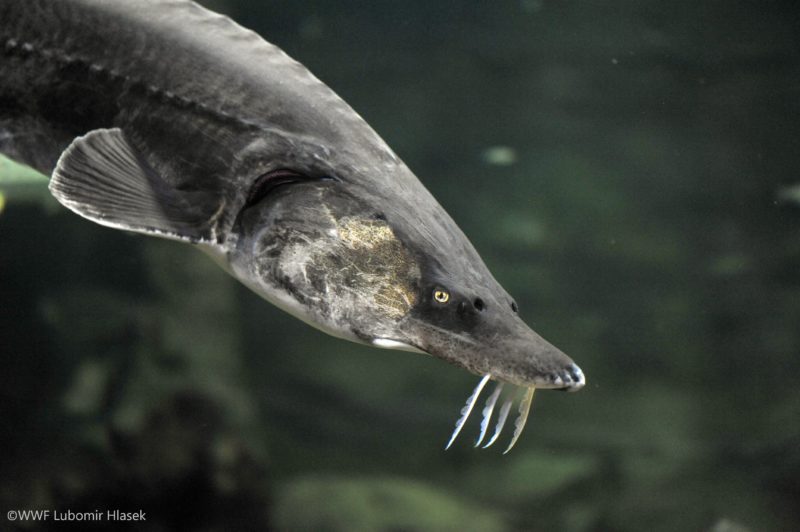
Image © Lubomir Hlasek, WWF
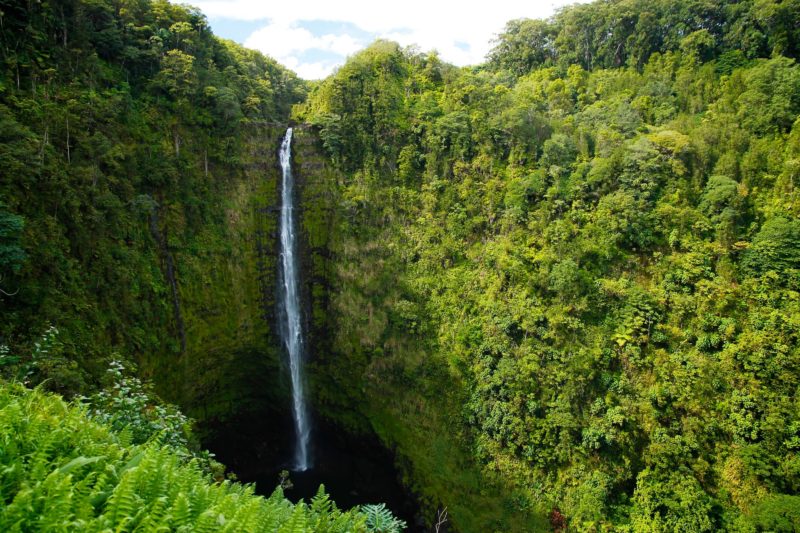
The 135m Akaka Falls. Image © Sarah Elliott
Hawaiian freshwater goby
From the massive, to the mini. The Hawaiian freshwater goby may only measure around 7cm, but they have one of the most surprising migrations of any fish. Juveniles journey from the sea to freshwater streams, where they mature into adults. What do they do though when they reach the immense vertical barrier of the 135m Akaka Falls? They use their sucker-like mouth and fused pelvic fins to scale the slippery rocks – they literally climb up the falls, pulling themselves up fin by fin! Once they have safely negotiated these seemingly impassable obstacles, they settle in calm mountain streams before spawning their own eggs, which float downstream into the sea and hatch, continuing the migratory cycle.
American paddlefish
In the slow-flowing freshwaters of the Mississippi River swims a strange-looking creature. Its movement slow and considered, its mouth gaping wide like a yawn, and, most bizarre of all, its snout extended from above the eyes into a long, flat paddle shape. The American paddlefish, also known as the spoonbill, is now the only living paddlefish species in the world, after its close cousin, the Chinese paddlefish, was declared extinct earlier this year. They are filter feeders – hence the wide mouth – and have no need for teeth, as their diet consists of microscopic plants and animals. Their paddle, or rostrum, is covered with tens of thousands of sensory receptors which pick up weak electrical fields given off by swarms of zooplankton, allowing them to find their food. Their migrations can take them 2,000 miles throughout a river system, and they are able to swim through brackish water, where saltwater mixes with fresh. The species’ meat and eggs are highly prized, which has led to illegal poaching and put increased pressures on populations. The species is now listed as Vulnerable.
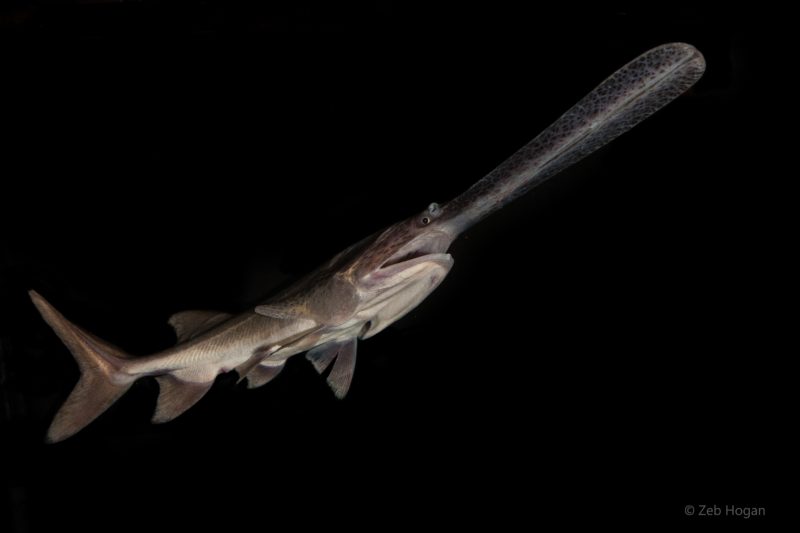
Image © Zeb Hogan
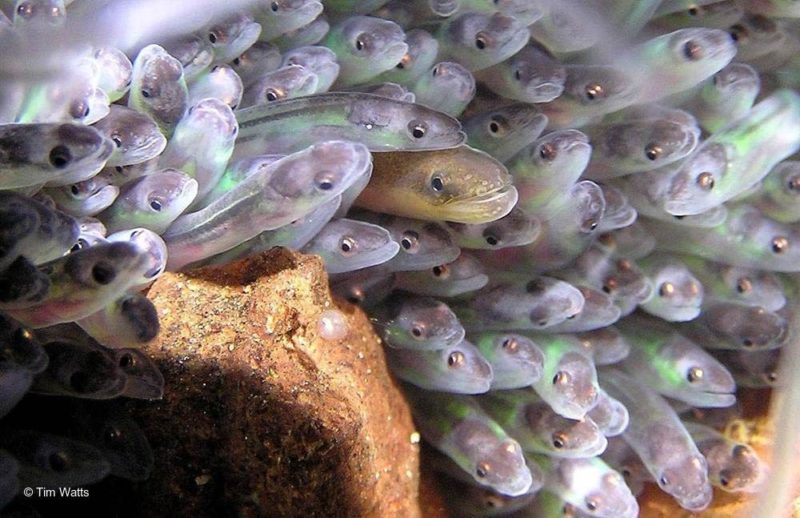
Glass eels. Image © Tim Watts, WWF
European eel
No list of incredible migratory fish would be complete without a nod to the fantastic European eel. Much of their life is shrouded in mystery, and their lifecycle includes one of the most remarkable feats of animal migration observed in nature. After spawning in the Sargasso Sea, it is assumed the eggs drift on Gulf Stream currents towards Europe. They hatch into larvae and subsequently morph into tiny cylindrical fish that are almost completely transparent. These ‘glass eels’ find their way into freshwaters, and darken in colour to become ‘elvers’. Migrating upstream, they mature into the dark adult eels that people are most familiar with. They can stay in these freshwater habitats for more than 20 years before they morph again, this time into ‘silver eels’, which swim back to the Sargasso Sea to spawn.
Incredibly, no silver eel has ever been caught in the open ocean. It is still unknown to science how long it takes them to reach their spawning grounds, or what kind of percentage of silver eels that left Europe survive the epic journey to the Sargasso Sea to spawn.
Once so common that they were used in medieval Europe as currency, they now face huge anthropogenic pressures and have seen their numbers drop by up to 95% across Europe. One of the drivers of this catastrophic loss is a huge, highly organised network of criminal gangs, who illegally traffic glass eels from Europe to Asia to feed a voracious market. The species is currently listed as Critically Endangered.

